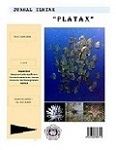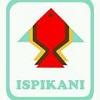Macrozoobenthic community structure in subtidal soft-bottom area along the coast of Lembeh Island -North Sulawesi
DOI:
https://doi.org/10.35800/jip.5.2.2017.15531Abstract
The present paper describes the soft-bottom macrozoobenthic community structure inhabiting Lembeh Island’s waters (North Sulawesi). Material for the study was collected from 5 stations in October 2013 using a La Motte grab (600 cm2) and subsequently sieved through a 1 mm square mesh sieve. A total of 1147 individuals belonging to 78 species (taxa) of macrozoobenthos and representative of higher taxonomic groups belonging to 12 phyla were recorded and identified. Univariate analysis showed low abundance of individuals and number of species in the Pintu Kota station which has a black sludge of sediment but Shannon index values at this station is the highest. Instead Motto station relatively far from anthropogenic disturbance showed a high abundance of individuals and number of species but Shannon index values at this station is the lowest. The station is dominated by Tanais sp at a density of 9533 individuals m-2. Shannon index is less sensitive to measure the effect of anthropogenic disturbances compared with the abundance of individuals and number of species. The multivariate analysis (Cluster Analysis and Correspondence Analysis) managed to separate the three groups (essemblage) makrozoobethos: Group A (Posokan), Group B (Motto) and Group C (Pancoran, Mawali and Pintu Kota). Abiotic factors such as granulometri, physicochemical, hydrodynamics and anthropogenic factors believed to be the factors controlling the formation of the ecological group.
Keywords: macrozoobenthos, anthropogenic impact, multivariate analysis, Lembeh Island.Â
Â
ABSTRAK
Tulisan ini menggambarkan struktur komunitas makrozoobentos substrat lunak yang menghuni perairan Pulau Lembeh (Sulawesi Utara). Materi untuk studi ini dikumpulkan dari 5 stasiun pada Oktober 2013 dengan menggunakan grab La Motte (600 cm2) dan kemudian disaring dengan saringan berukuran 1 mm persegi mata saringan. Sebanyak 1147 individu yang termasuk dalam 78 spesies (taksa) makrozoobentos dan mewakili 12 fila atau grup taksonomi telah dicatat dan diidentifikasi. Analisis univariat menunjukkan rendahnya kelimpahan individu dan jumlah spesies di stasiun Pintu Kota yang memiliki sedimen lumpur berwarna hitam tetapi nilai indeks Shannon di stasiun ini adalah yang tertinggi. Sebaliknya di stasiun Motto yang relatif jauh dari gangguan antropogenik menunjukkan tingginya kelimpahan individu dan jumlah spesies tetapi nilai indeks Shannonnya adalah yang terendah. Stasiun ini didominasi oleh Tanais sp dengan kepadatan 9533 individual m-2. Indeks Shannon kurang peka mengukur pengaruh gangguan antropogenik dibandingkan dengan nilai kelimpahan individual dan jumlah spesies. Analisis multivariat (Analysis Kluster dan Analisis Korespondensi) berhasil memisahkan 3 grup (essemblage) makrozoobetos: Grup A (Posokan), Grup B (Motto) dan Grup C (Pancoran, Mawali dan Pintu Kota). Faktor abiotik seperti granulometri, hidrodinamika dan fisika-kimia perairan serta faktor antropogenik diduga merupakan faktor-faktor pengendali pembentukan grup ekologis tersebut.
Kata kunci: makrozoobentos, dampak antropogenik, analisis multivariat, Pulau Lembeh. Â
Downloads
Published
How to Cite
Issue
Section
License
COPYRIGHT
Authors who publish with this journal agree to the following terms:
Authors hold their copyright and grant this journal the privilege of first publication, with the work simultaneously licensed under a Creative Commons Attribution License that permits others to impart the work with an acknowledgment of the work's origin and initial publication by this journal.
Authors can enter into separate or additional contractual arrangements for the non-exclusive distribution of the journal's published version of the work (for example, post it to an institutional repository or publish it in a book), with an acknowledgment of its underlying publication in this journal.
Authors are permitted and encouraged to post their work online (for example, in institutional repositories or on their website) as it can lead to productive exchanges, as well as earlier and greater citation of the published work (See The Effect of Open Access).


















